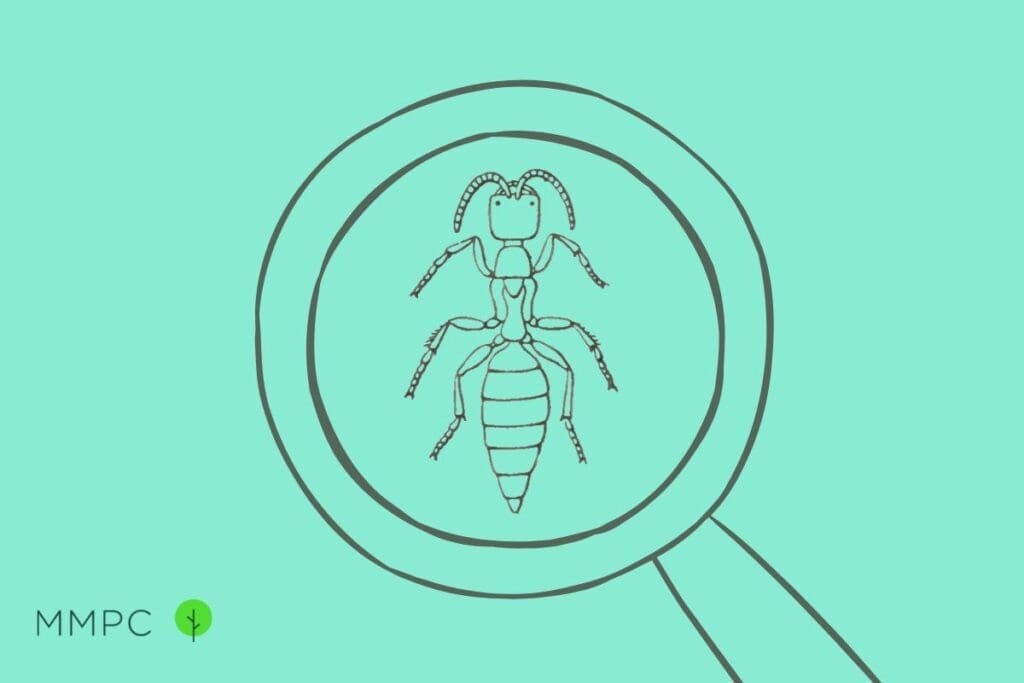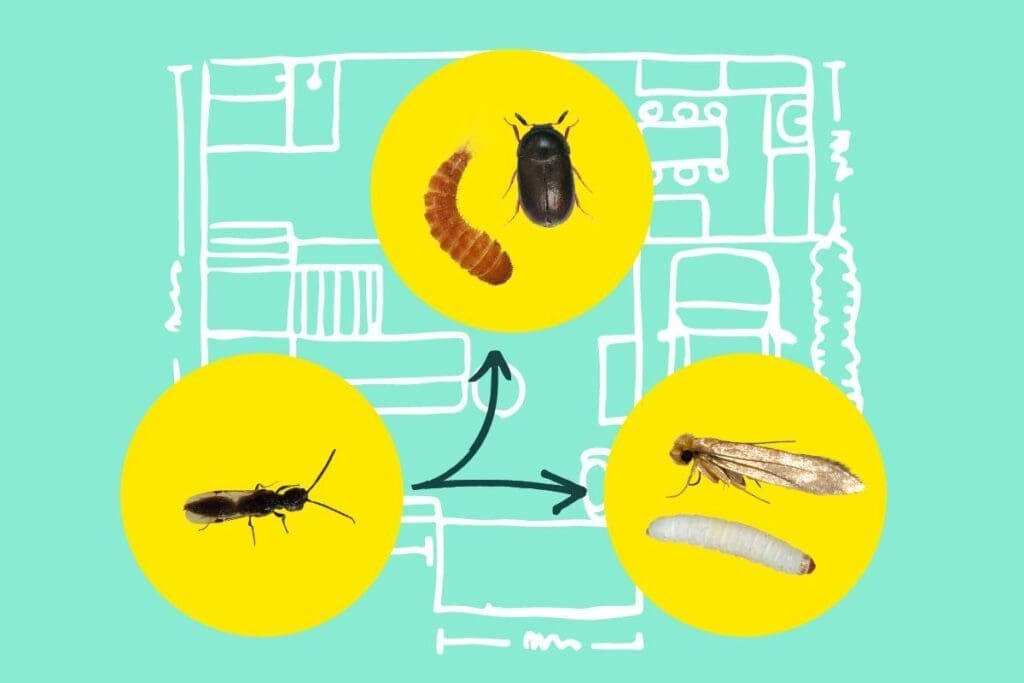
You might have come across the term “parasitic wasps” in an internet article, a nature documentary, or perhaps a conversation with your neighborhood insect enthusiast. However, they’re not actually parasitic; they’re parasitoids.
What’s the difference?
Well, these wasps themselves don’t live in or on another species to survive. As parasitoids, they lay their eggs inside another species so their larvae can grow and develop within the host’s body.
One particular type of parasitoid wasp to pay attention to—the type that’s most likely to be found in peoples’ homes—is the bethylid wasp.
What Are Bethylid Wasps?
- Small, parasitoid wasps
- Usually found in places infested by beetles, weevils, or moths
Bethylid wasps, also known as “flat wasps,” are a family (Bethylidae) of small, parasitoid wasps that attack the larvae of beetles, weevils, and moths.
Once they find a suitable host (an unfortunate carpet beetle larva, for example), they use a stinger-like tube called the ovipositor to inject their eggs into the host’s body. Over the course of about 2 months, the eggs hatch into tiny, parasitic wasp larvae that grow, pupate, and develop into new adult wasps—all while still inside the host.

The important thing to understand about these particular parasitoid wasps is that they like to target common household pest species like carpet beetles, clothes moths, cigarette beetles, drugstore beetles, and grain beetles.
Therefore, bethylid wasps are typically found in places infested by these pests.
Most of the time when we’re called to help a client deal with bethylid wasps, there’s usually an underlying beetle or moth infestation that we have to address first.
Are They Harmful / Dangerous to Humans?
- Stings if threatened
- Not venomous to humans
- May cause pain, itchiness, redness, and other symptoms
- Potentially dangerous if allergic to wasp stings
Bethylid wasps are generally not harmful to humans, but they may sting if they feel threatened. Fortunately, their stings are not venomous.
Most stings occur when they are mishandled (i.e. picked up with bare hands) or accidentally trapped under clothing or bed covers. And given their small size, they’re not easy to spot if one wanders into your closet or bedroom in search of carpet beetle larvae.
Their stings are not venomous to humans. In most cases, getting stung results in pain (akin to being pricked by a needle) followed by an itchy, red welt. Other possible symptoms include headache, dizziness, or a mild fever. However, some people may experience a more serious allergic response.
And, in case you’re wondering, bethylid wasps (and other parasitoid wasps) do not lay their eggs in humans.
In our experience, clients often mistake bethylid wasp stings for bed bug bites, which may look similar for many people.
How to Recognize Bethylid Wasps
- Tiny (2–5 mm long)
- Dark brown or black
- Resembles ants
- Most are wingless

Bethylids wasps are tiny compared to yellowjackets and other common wasps. Most are between 2–5 millimeters in length.
Their size and appearance closely resembles household ants. Like ants, bethylid wasps are usually dark brown or black in color. Their bodies are flat, slender, and have 3 distinct segments (head, thorax, and abdomen).
Female bethylid wasps are wingless (in most species), resembling worker ants. Male bethylid wasps sometimes have clear, transparent wings, resembling flying ants.
But if you were to look more closely, you might notice some key differences: Bethylid wasps don’t have the characteristic elbow-shaped antennae that ants do. Their thorax and abdomen sections also appear longer and more pointed at the end.
If you’re not sure if you have ants or bethylid wasps, take a picture and send it to MMPC’s Free Pest ID Center. Our entomologists will help you identify the pest and, if necessary, provide suggestions for treatment.
Getting Rid of Bethylid Wasps
The best way to get rid of bethylid wasps in your home is by resolving the underlying pest infestation that attracted them in the first place (i.e. carpet beetles, clothes moths, etc.). Once you get rid of their hosts, these parasitoid wasps will go away on their own.
The most common pest issues that attract bethylid wasps are:
- Carpet beetles
- Clothes moths
- Stored product pests
If you see adult wasps crawling around (most are wingless and can’t fly), use a vacuum cleaner to catch them. Do not attempt to pick them up with your bare hands.
Severe infestations of bethylid wasps may require professional help to get rid of completely. If you live in New York City or the Tri-State area, drop us a line!
